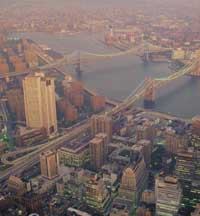House Rules
A new Arizona law sets inspection standards.
Arizona apartment owners breathed a sigh of relief when Gov. Janet Napolitano signed HB 2221, a bill that allows municipalities to conduct an interior inspection of rental units when there is a complaint, unusual criminal activity, or an obvious building code violation. This can only happen with the consent of the renter or owner or with a warrant. Since there is no fee required, many Arizona apartment owners are happy.
The Arizona Multihousing Association, which pushed for the bill, acted on the issue when it noticed jurisdictions elsewhere passing bills that required apartment firms to register and when a proposal in Phoenix required apartment owners to pay $75 per unit annually to fund an inspection program. “This [the inspection programs] is probably the hottest topic of discussion, at least in terms of government affairs, around the country for the industry,” says Terry Feinberg, president of the association.
The new law prohibits a municipality from charging the tenant or property owner for initial inspections. It does allow for fines and fees when landlords or property owners do not respond to and fix identified problems.
Initial reactions to the law were positive. “I feel it’s a great benefit and relief to those owners that have consistently maintained and improved their communities here in the valley,” says Prima Walker, director of marketing and public relations for Mark-Taylor Residential in Phoenix. “Additionally, it will help the state focus [its] limited resources on those owners that are truly in violation of rental housing codes and should ultimately result in better neighborhoods.”
–Les Shaver
Fancy Footwork
L.A.’s Met Lofts goes interactive.
Forest City’s latest L.A. project takes a new twist on the popular interactive Dance Dance Revolution video game. The upscale loft-style community features EnterActive, a large-scale display that illuminates the building’s façade via the movements of visitors in the building’s lobby.
“The building is in the middle of the arts and entertainment district with Staples Center right there, and we wanted something that was going to add to that excitement,” says Kevin Ratner, senior vice president of Forest City Residential West, a division of Forest City. The city’s Community Redevelopment Agency required an on-site public art display since it provided funding.
The display lights up the area, with a luminous carpet of more than 200 tiles covered with light-emitting diodes embedded in the entry walkway. When people stand, walk, or dance on the squares, they activate a corresponding display of lights on the building face. To add to the excitement, participants can view a video display that shows the building’s changing façade as they step on the carpet. “The lights start playing with you, and it seems like the building knows a lot more about you than you want it to,” says Cameron McNall, co-founder of Electroland, the Los Angeles-based team that created the display. It’s time to put on your dancing shoes.
–Rachel Z. Azoff
